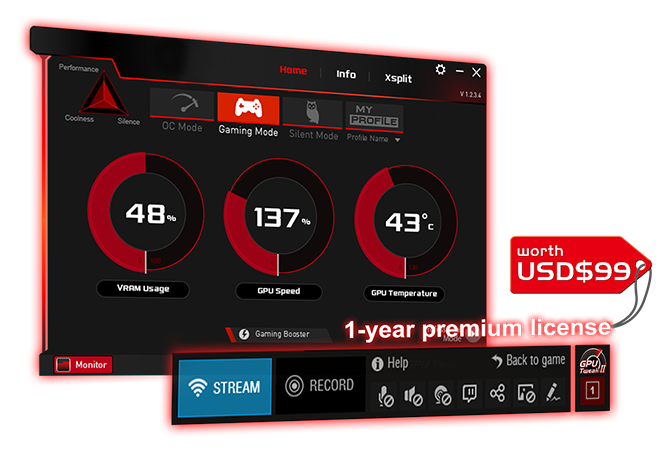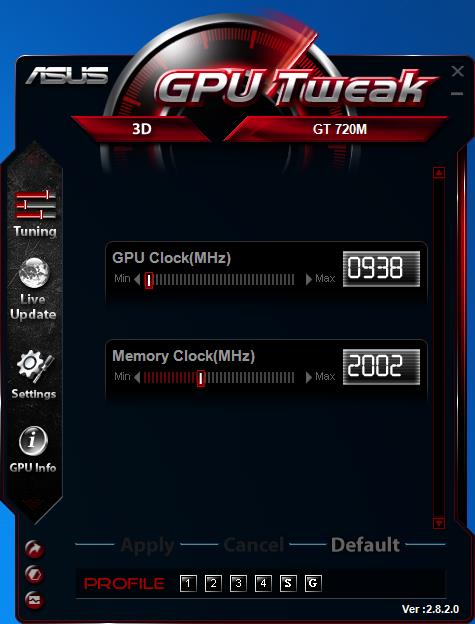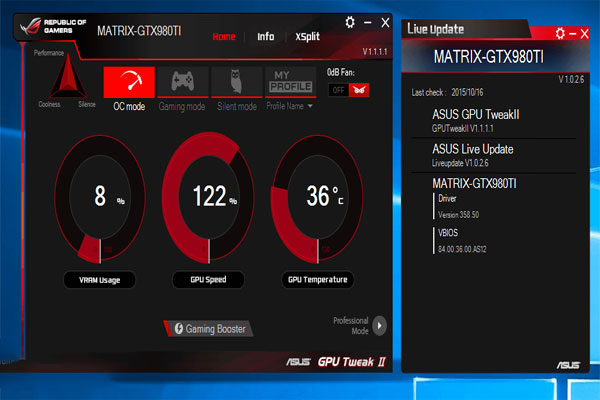
- #Asus gpu tweak target temp software
- #Asus gpu tweak target temp license
- #Asus gpu tweak target temp professional
1.5 “Your Products” means products developed or to be developed by or for You that include an Intel Component executing the Materials. 1.4 “You” or “Your” means you or you and your employer and its affiliates, whether or not capitalized.
#Asus gpu tweak target temp software
1.3 “Materials” means software or other collateral Intel delivers to You under this Agreement. 1.2 “Intel Components” means a hardware component or product designed, developed, sold, or distributed by Intel or its affiliates. 1.1 “Including” means including but not limited to, whether or not capitalized. If You do not agree, do not use the Materials and destroy all copies. By downloading, installing, or using the Materials, You agree to these terms. If You are accepting this Agreement on behalf of or in conjunction with Your work for Your employer, You represent and warrant that You have the authority to bind your employer to this Agreement.
#Asus gpu tweak target temp license
Even as far as I could push the card on air, the card never went above 68☌, showing us how amazing the Strix cooler really is.Deprecated: Intel OBL Distribution (Commercial Use) License This LIMITED DISTRIBUTION LICENSE AGREEMENT (“Agreement”) is a contract between You and Intel Corporation and its affiliates (“Intel”). With the GPU running at 2055 MHz, our max temp recorded using GPU Tweak II was 68☌. That being 14592, not that the Time Spy score matters. So, I left the memory slider at +350 on the memory as this was where my highest overall score was with Time Spy. After the memory slider was past +350 on the core, the overall Time Spy score started to decrease. Although the memory slider can be nearly maxed out and still finish the benchmark. Next, we started playing with the memory clock speed. Anything past that, 3DMark, and in some cases the entire system, would crash. The highest we could get the boost clock to was an increase of +55 on the core which gave us an overall clock speed of 2055 MHz. Running 3DMark Time Spy in after each increase to the boost clock. Next, we started increasing the GPU Boost Clock by increments of 10. In the case of the Strix 2080 Ti, it increased the power target by 25 to 125%. First, we increased to power target as high as possible.

#Asus gpu tweak target temp professional
We set the GPU Tweak II to professional mode and started tweaking. Next, we started playing around with the clock speed of both the memory and the GPU clock speed using GPU Tweak II. I got my answer, 89☌ with a max overclock of 2040 MHz. I just wanted to see how hot the top card would get. Just for fun, we attempted to overclock the top card, with SLI disabled. While running FurMark the max temp hit 60☌.

After close to an hour of benchmarking we ran FurMark as one of our benchmarks. Next, we started testing the games we benchmarked for this review.

The Strix 2080 Ti, at stock, idled at 38☌. The first temp recorded was the stock idle temperature after a couple hours at idle.

We do our best to keep the ambient temperature right around 20☌ during testing. The ambient temperature at the time of testing was 20☌ or about 68☏. The max temp while gaming for well over an hour was also recorded. To Validate our overclock, we ran 3DMark Time Spy. To monitor temperatures, we used both GPU Tweak II and Hardware Monitor. We only overclocked the GPU and the i9-9900K at its stock speeds. For overclocking, we used ASUS GPU Tweak II for monitoring and adjusting GPU clock and memory speeds.


 0 kommentar(er)
0 kommentar(er)
